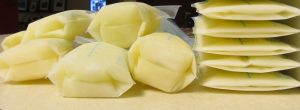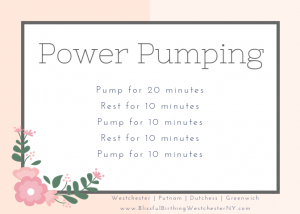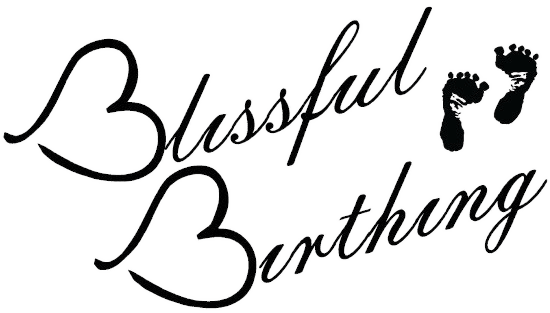The World Health Organization recommends breastfeeding exclusively for at least the first six months of your baby’s life. This may seem like a lofty goal for women who must return to work outside of the home, and may even be a cause of stress. First, know that you are not alone. According to the Bureau of Labor Statistics, 70.5% of women with children under 18 were participating in the labor force in 2016. Second, you can do it! Here are my favorite quick tips on how to build a breast milk stash (almost) effortlessly.
The Breast Milk Stash
Most of us have heard the term, seen the photos, and asked the questions. Is it really necessary to have a chest freezer full of breast milk? No. In fact, the Academy of Breastfeeding Medicine does not recommend storing breast milk in the freezer beyond three (3) months. After 1-5 months of storage there is a significant decrease in vitamin C levels. Enough research has not yet been done to determine how freezing impacts all vitamins and minerals in human milk. As your baby grows and develops, so do her nutritional needs and the composition of your breast milk. This means it’s best not to leave milk in the freezer for the full 3 months, if you can avoid doing so.
How to Stash
You should not pump for the first two weeks after birth, unless you have to return to work immediately or your baby is in the NICU and unable to nurse. During this time your main focus with regards to feeding should be on establishing your milk supply. The best way to do this is by nursing on demand and following your baby’s cues (not the clock). Start thinking about building your stash after your supply is established.
Pumping during the early weeks may lead to your body overproducing milk. While this may sound great if you’re planning on returning to work, it is not. You may find yourself quite uncomfortable between feedings and overnight because your body has “learned” to make more milk than your baby is taking in. This can also potentially put you at risk for a plugged milk duct or mastitis (which are quite unpleasant to deal with).
It is totally fine, however, to passively collect milk without artificially increasing your supply. Milkies Milk-Saver Bags or a Haakaa Pump
can be used to collect milk from the breast you are not nursing on that would otherwise leak into a breast pad. My preference is the haakaa pump because the collected milk is not in direct contact with your breast (so the milk doesn’t get warmer than it should – which could create an ideal environment for bacterial growth). However the Milkies Milk Saver bags have less of a learning curve and no risk of baby kicking it off since it stays totally in your bra.
- When combining milk that you collected at different times, make sure the milks are the same temperature. This prevents warming and cooling of the milk which can potentially promote bacterial growth.
- You can continue to passively collect beyond the first month to effortlessly add to your breast milk stash! This can yield quite a bit of milk without the need to pump.
Storing Your Milk
I recommend keeping milk in the refrigerator for no longer than three days. (Yes, I know that is a conservative amount of time, but the quality of expressed breast milk can decline after that time. The American Academy of Breastfeeding Medicine has a fantastic protocol for human milk storage, which can be found here.) If you’re exclusively nursing when you’re with your baby, you can freeze expressed milk as soon as you collect it.
-
- Your breastfed baby needs about 1oz per hour you are away (this will vary depending on her age, if she’s eating solids, going through a growth spurt, etc). I recommend freezing in 2-4oz increments.
- Freezing in small increments allows her caregiver to quickly thaw the milk and will cut down on waste in the case that she doesn’t finish her bottle.
-

The milk on the left was frozen with the bags upright. The right was frozen with the bags laying flat.
Thawed milk must be discarded after 24 hours.
- Freeze bags with breast milk flat (rather than upright). They will stack easier and thaw more quickly.
I really like this milk storage organizer for organizing and storing your milk in the freezer. The organizer will allow you to rotate through your stash and prevent you from losing any milk in the freezer.
Label your pumped milk with the date it was pumped and if you had taken any medications, consumed caffeine, etc. If you are consuming caffeine, keep in mind that 60 minutes after consumption the caffeine levels in your breast milk peak. Most babies aren’t effected by the caffeine, but some are. Labeling milk that was expressed after caffeine consumption may be helpful down the road if you notice your baby is effected by it.
Many women make the most milk overnight and find that their early morning pumping session yields the most milk. If you consistently pump after your morning nursing session, you can start the day with a few ounces for your breast milk stash.
- If you consistently pump at the same time each day your body will recognize a higher “demand” for that time.
The best way to build your supply is by nursing on demand. When you’re away from your baby for work, that just isn’t possible and your supply may drop. It is important to come up with a pumping schedule for work and stick to it as best you can, to reduce the risk of your supply dropping.
Some women find that “Power Pumping” can help them boost their supply if they’re going through a drop in production. Substituting one pumping session daily for four days with a power pumping session can help give you a little bit of a “boost” in production.

Final Thoughts
Most importantly – stay hydrated and well-nourished. Breastfeeding can burn up to 500 calories a day! Make sure you are eating enough so your body has the energy to produce milk. Foods like oatmeal, flax seed, brewer’s yeast, and fennel are galactagogues – foods that encourage milk production. Try adding them to your diet for an added boost! It is important to remember that these foods may make you (or your baby) gassy; increasing your water intake can help mitigate this a bit.
Also, and I cannot stress this enough, FEED YOUR BABY, NOT YOUR FREEZER! It is great to have a frozen breast milk stash. However, your baby should drink that milk within 3 months of pumping. Remember: Your baby can only drink so much! You do not need to have a deep freezer full of frozen breast milk; it will likely go bad before you can use all of it. As long as your baby is able to get breast milk while you’re away, that is what matters.
Additional Reading
I Want to Stop Pumping! – How to Wean From the Breast Pump
Breast Milk and Alcohol – What Every Breastfeeding Mom Needs to Know


Comments 1
Pingback: What Do I Do With My Breast Pump When I Finish Using It?